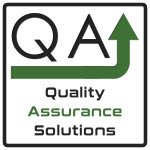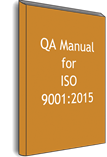PDCA Cycle
Description:
Plan-Do-Check-Act ( PDCA Cycle) also called PDCA, plan-do-study-act (PDSA) cycle, Deming cycle, or Shewhart cycle. Follow the plan-do-check-act cycle when implementing change. Repeat the PDCA cycle again and again for continuous improvement.
When To Use :
- As a model for continuous improvement.
- When starting a new improvement project.
- When developing a new or improved design of a process, product or service.
- When defining a repetitive work process.
- When planning data collection and analysis in order to verify and prioritize problems or root causes.
- When implementing any change.
8D Manager Software with 8D, 9D, 5Y and 4M report generator. Your corrective action software for managing, measuring, and reporting issues.
PDCA Cycle Construction :
1. Plan. Recognize an opportunity and plan a change. Document the plan.
2. Do. Test the change. Carry out a small-scale study.
3. Check. Review the test, analyze the results and identify what you've learned.
4. Act. Take action based on what you learned in the study step:
If the change did not work, go through the cycle again with a different plan. If you were successful, incorporate what you learned from the test into wider changes. Use what you learned to plan new improvements, beginning the cycle again
Example:
The Pearl River, NY School District, a 2001 recipient of the Malcolm Baldrige National Quality Award uses the PDCA cycle as a model for defining most of their work processes, from the boardroom to the classroom.

PDCA cycle is the basic structure for the districts overall strategic planning, needs-analysis, curriculum design and delivery, staff goal-setting and evaluation, provision of student services and support services, and classroom instruction. The above figure shows their A+ Approach to Classroom Success which illustrates their continuous cycle of designing curriculum and delivering classroom instruction.
1- Plan. The A+ approach begins with a plan step called analyze. In this step, the team analyzes the students' needs by examining available data from Pearl River's electronic data warehouse which includes grades to performance on standardized tests. Data can be analyzed for individual students or stratified by grade, gender or any other subgroup.
8D Manager Software with 8D, 9D, 5Y and 4M report generator. Your corrective action software for managing, measuring, and reporting issues.
2- Do. The A+ Approach continues with two steps:
The first step determines the required national and state standards and how they will be assessed. Based on this, the teaching staff plans the curriculum by reviewing subject material taught earlier. Then the staff compares and modifies the curriculum to assure continuity in later grade levels and other disciplines for the students. Teachers develop individual goals to improve their instruction where the analyze step showed any gaps.
For the second step the teachers provide the actual instruction following the above curriculum and teaching goals. Within the set parameters, teachers vary the delivery of instruction based on each students learning rates and styles.
3- Check. Formal and informal assessments take place continually. This includes daily teacher assessments and-six-weeks progress reports compared to annual standardized tests. In addition teachers access comparative data on the electronic database to identify trends. Also a special child study team monitors high-need students.
If these assessments show students are not learning as expected then mid-course corrections are made. This includes re-instruction, changing teaching methods and more direct teacher mentoring. Assessment data becomes the input for the next step in the cycle.
4- Act. When goals are met, the school standardizes the curriculum design and teaching methods. Teachers share best practices in formal and informal settings. Results from this cycle become input for the analyze phase of the next A+ cycle.
|
Quality Assurance Solutions Robert Broughton (805) 419-3344 USA |
 |
|
Software, Videos, Manuals, On-Line Certifications | ||
|
450+ Editable Slides with support links | ||
|
Corrective Action Software | ||
|
Plan and Track Training | ||
|
AQL Inspection Software |
|
Learn and Train TRIZ | ||
|
Editable Template | ||
|
Templates, Guides, QA Manual, Audit Checklists | ||
|
EMS Manual, Procedures, Forms, Examples, Audits, Videos | ||
|
On-Line Accredited Certifications Six Sigma, Risk Management, SCRUM | ||
|
Software, Videos, Manuals, On-Line Certifications |

























